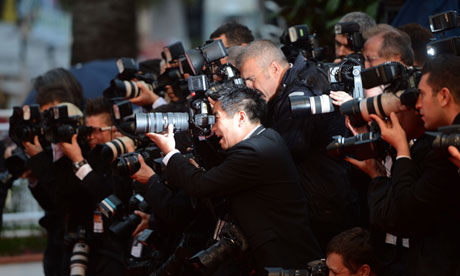JK Rowling's authorship revelation has transformed the fortunes of this enjoyable crime novel – but her formidable storytelling talents were on display all along


The clues were there … writing as Galbraith, Rowling continues her exploration of journalism and celebrity. Photograph: Anne-Christine Poujoulat/AFP/Getty Images
Published in April as the debut novel by Robert Galbraith, The Cuckoo's Calling was revealed last weekend to be the ninth full-length work of fiction by JK Rowling – after the seven Harry Potter books and last year's adult novel The Casual Vacancy – and so immediately changed status from a first edition at risk of remaindering to a No 1 and rapidly reprinting bestseller.
As a result, reading the book now is rather like watching a Derren Brown trick on freeze-frame replay, wondering if there are clues to how the wool was being pulled. The easy familiarity that "Galbraith" shows with film sets, for example, is now explained by the fact that eight major movies were made from "his" first seven novels. Rowling also chose to hide herself behind a surname shared with a literary and public figure who had the same initials as her: the economist JK Galbraith.
Whether or not that was deliberate, it's also notable that this is, in effect, the second time the author has used a concealing identity intended to disguise gender: her "JK" was famously calculated to hoodwink boy readers thought to be drawn to authors with male first names.
To their great credit, some of those who reviewed the book blind spotted that "Robert Galbraith" was unusually attuned to female fashion. To the undeceived reader, there are other hints of fictional cross-dressing. The first character we meet, Robin, sent as a temp to work for London private eye Corcoran Strike, is intensely aware of both the sensitivity of her breasts and the tendency for men to stare at them. While a male writer might also have had these insights, it seems odder that Strike, when he goes into the gents in a pub, is struck by the stink of piss, a fact that soon becomes unremarkable to urinal users.
But the strongest retrospective evidence that the book was written not just by a woman masquerading as a man but by Joanne Rowling specifically is its sharp concern with journalism and celebrity. Although belonging to very different genres, the Potter books, The Casual Vacancy and now The Cuckoo's Calling all feature tabloid hacks and paparazzi.
The "Galbraith" novel even begins with a pack of snappers outside the house where a supermodel has plunged to her death in an apparent drug-fuelled suicide. Lula Landry – another hidden wink, perhaps, as Rowling's Potter books are full of alliterative names – is "one of the most photographed women in the world" and may, Diana-like, have been hounded to death by the pressure of celebrity and attention.
How fascinating to read these scenes now, knowing that they were written by a witness at the Leveson inquiry. Rowling's animus against the press, which began with the hateful hack Rita Skeeter of the Daily Prophet in the Potter stories, vividly continues, while Landry, who was an adopted mixed-race child, carries on the sympathy for the troubled or excluded that has been one of Rowling's most attractive qualities as a writer.
The central character also bears the mark of Rowling's predilection for physical distinctiveness. The Casual Vacancy included a number of massively fat men – Hagridian, as Potter readers might have thought of them – and private eye Cormoran Strike, a former military policeman, is another very big chap, with the added distinction of a prosthetic leg.
More

 The clues were there … writing as Galbraith, Rowling continues her exploration of journalism and celebrity. Photograph: Anne-Christine Poujoulat/AFP/Getty ImagesPublished in April as the debut novel by Robert Galbraith, The Cuckoo's Calling was revealed last weekend to be the ninth full-length work of fiction by JK Rowling – after the seven Harry Potter books and last year's adult novel The Casual Vacancy – and so immediately changed status from a first edition at risk of remaindering to a No 1 and rapidly reprinting bestseller.
The clues were there … writing as Galbraith, Rowling continues her exploration of journalism and celebrity. Photograph: Anne-Christine Poujoulat/AFP/Getty ImagesPublished in April as the debut novel by Robert Galbraith, The Cuckoo's Calling was revealed last weekend to be the ninth full-length work of fiction by JK Rowling – after the seven Harry Potter books and last year's adult novel The Casual Vacancy – and so immediately changed status from a first edition at risk of remaindering to a No 1 and rapidly reprinting bestseller.
No comments:
Post a Comment